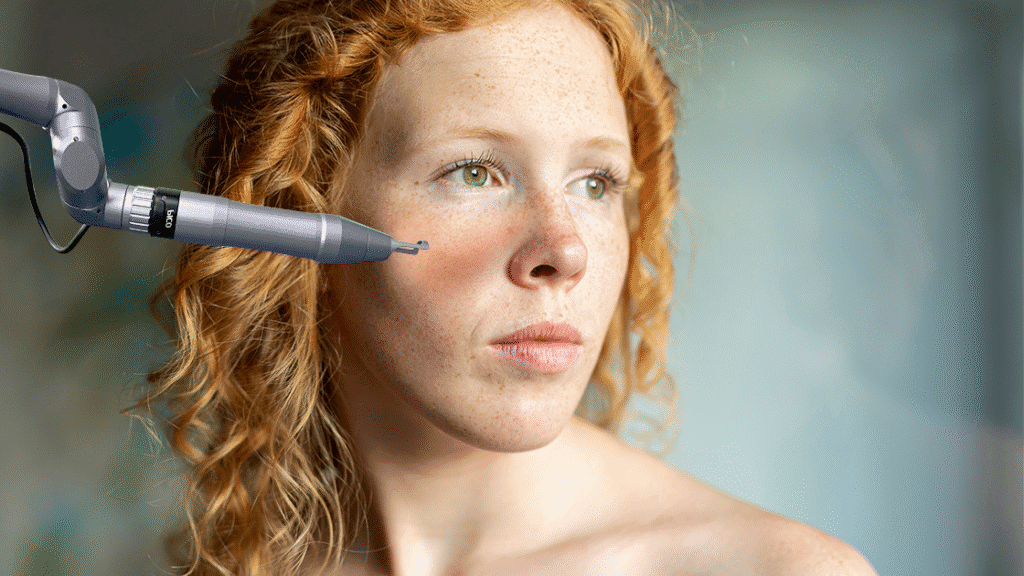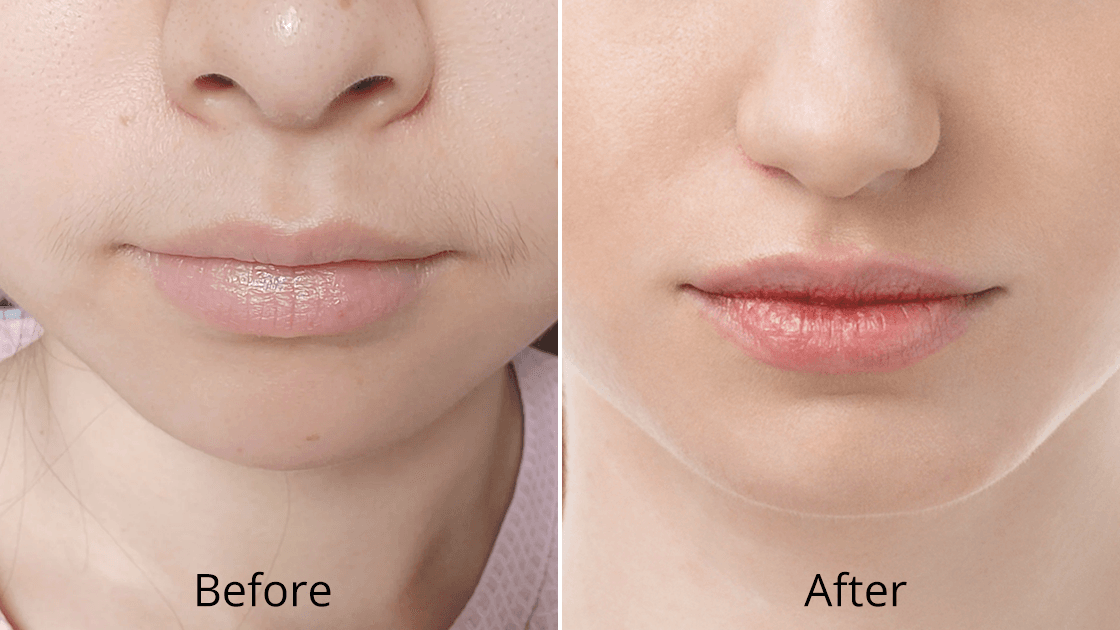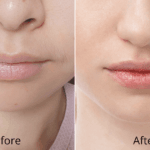Modern dermatological advances have revolutionized the way we address common skin concerns, with enlarged pores and uneven skin tone being among the most frequently treated conditions. These aesthetic challenges affect millions of individuals worldwide, often leading to decreased confidence and extensive skincare routines that provide limited results. Enter Pico Laser technology – a groundbreaking treatment modality that has transformed the landscape of non-invasive skin rejuvenation. This comprehensive guide explores how Pico Laser effectively addresses enlarged pores and uneven skin tone, providing patients with remarkable results and minimal downtime.
1. Introduction to Pico Laser Treatment
The emergence of picosecond laser technology represents a significant milestone in aesthetic dermatology, offering unprecedented precision and effectiveness in treating various skin imperfections. Understanding the fundamentals of this innovative treatment is essential for anyone considering Pico Laser therapy for their skin concerns.
1.1 What is Pico Laser?
Pico Laser technology utilizes ultra-short pulse durations measured in picoseconds (trillionths of a second) to deliver precise energy to targeted skin tissues. Unlike traditional nanosecond lasers that operate at longer pulse durations, picosecond lasers create a photoacoustic effect that mechanically disrupts target structures without generating excessive thermal damage. This advanced mechanism allows for more effective treatment of pigmentary disorders, textural irregularities, and vascular lesions while minimizing collateral tissue damage. The technology employs specific wavelengths, typically 532nm, 755nm, and 1064nm, each optimized for different chromophores and treatment depths within the skin architecture.
1.2 Why Choose Pico Laser for Skin Concerns?
The superiority of Pico Laser technology lies in its ability to achieve exceptional clinical outcomes with significantly reduced downtime compared to conventional laser systems. The ultra-short pulse duration enables selective photothermolysis with enhanced precision, targeting specific cellular components while preserving surrounding healthy tissue. This translates to faster healing times, reduced risk of post-inflammatory hyperpigmentation, and improved patient comfort during treatment sessions. Additionally, the photoacoustic effect generated by picosecond pulses stimulates natural wound healing cascades, promoting collagen neogenesis and dermal remodeling that contribute to long-lasting skin improvement and enhanced overall skin quality.
2. Understanding Enlarged Pores and Uneven Skin Tone
To appreciate the effectiveness of Pico Laser treatment, it’s crucial to understand the underlying pathophysiology of enlarged pores and uneven skin tone. These interconnected skin concerns share common etiological factors and often coexist, requiring comprehensive treatment approaches that address multiple aspects of skin architecture and function.
2.1 What Causes Enlarged Pores?
Genetic Predisposition – Determines natural pore size and baseline sebaceous gland activity throughout life.
Excess Sebum Production – Causes follicular distension, stretching the pore opening.
Chronic Inflammation – From acne or environmental irritants, damages the perifollicular elastic fiber network.
Age-Related Collagen and Elastin Loss – Weakens pore wall integrity, making pores more visible.
UV Radiation Exposure – Triggers matrix metalloproteinase activation, breaking down supportive dermal proteins.
Cumulative Environmental Damage – Accelerates structural deterioration, further enlarging pore appearance over time.
2.2 The Science Behind Uneven Skin Tone
Uneven skin tone, medically termed dyschromia or dyspigmentation, manifests through various mechanisms affecting melanin distribution and production within the epidermis and dermis. Melanocyte dysfunction can result from chronic UV exposure, hormonal fluctuations, inflammatory processes, or genetic factors affecting tyrosinase enzyme activity. Post-inflammatory hyperpigmentation occurs when inflammatory mediators stimulate excessive melanin synthesis in response to tissue injury or irritation. Solar lentigines develop through cumulative photodamage, creating focal areas of increased melanocyte density and activity. Melasma involves complex interactions between estrogen, progesterone, and UV exposure, leading to characteristic bilateral facial hyperpigmentation that can be particularly challenging to treat effectively.
2.3 Link Between Enlarged Pores and Uneven Skin Tone
The relationship between enlarged pores and uneven skin tone extends beyond mere cosmetic coincidence, reflecting shared underlying pathophysiological mechanisms that affect overall skin health and appearance. Both conditions often result from chronic photodamage, which compromises dermal structural integrity while simultaneously disrupting normal melanocyte function and distribution. Inflammatory processes that contribute to pore enlargement frequently trigger compensatory hyperpigmentation responses, creating a cycle of ongoing skin damage. Additionally, sebaceous gland hyperactivity associated with enlarged pores can create microenvironments conducive to bacterial proliferation and subsequent inflammatory reactions. This interconnection explains why comprehensive treatment approaches addressing both concerns simultaneously often yield superior aesthetic outcomes compared to targeting individual conditions.
3. How Pico Laser Improves Enlarged Pores
The application of Pico Laser technology for pore reduction represents a significant advancement in non-invasive skin rejuvenation, offering patients effective solutions without the extended recovery periods associated with more aggressive treatments. Understanding the specific mechanisms by which picosecond lasers address pore enlargement helps patients make informed treatment decisions.
3.1 Pico Laser Technology for Skin Resurfacing
Pico Laser achieves remarkable Hauterneuerung results through its unique photoacoustic mechanism, which creates controlled micro-injuries in the dermal matrix without significant thermal damage to surrounding tissues. The ultra-short pulse duration generates intense pressure waves that mechanically disrupt aged or damaged collagen fibers while stimulating fibroblast activation and new collagen synthesis. This process, known as laser-induced optical breakdown (LIOB), creates microscopic treatment zones that trigger the body’s natural wound healing cascade, promoting dermal remodeling and improved skin architecture. The fractional delivery system ensures that healthy tissue bridges remain intact between treatment zones, facilitating rapid healing and minimizing downtime while maximizing treatment efficacy and patient safety.
3.2 Minimizing Pore Size with Pico Laser Treatment
Clinical studies demonstrate that Pico Laser treatment can achieve significant pore size reduction through targeted remodeling of perifollicular collagen and elastin structures. The laser energy creates controlled thermal zones around pilosebaceous units, stimulating neocollagenesis and elastic fiber regeneration that tighten and contract pore openings. Research indicates that patients typically experience a 25-30% reduction in pore diameter following a complete treatment series, with improvements becoming apparent 2-4 weeks post-treatment and continuing to develop over several months. The mechanism involves both immediate tissue contraction from collagen fiber cross-linking and long-term remodeling through enhanced fibroblast activity, resulting in sustained pore size reduction and improved overall skin texture and appearance.
3.3 Benefits of Pico Laser for Oily Skin
Individuals with oily skin often experience the most dramatic improvements from Pico Laser treatments, as the technology addresses multiple factors contributing to sebaceous gland hyperactivity and associated skin concerns. The photoacoustic effects help normalize sebum production by reducing inflammation around hair follicles and sebaceous glands, creating a healthier microenvironment for balanced oil production. Additionally, the collagen remodeling effects strengthen the dermal matrix surrounding pores, providing better structural support that prevents excessive follicular distension. The antimicrobial effects of certain laser wavelengths can also help reduce Propionibacterium acnes colonization, further improving skin health and reducing inflammatory responses that contribute to both pore enlargement and associated skin texture irregularities.

4. How Pico Laser Addresses Uneven Skin Tone
The versatility of Pico Laser technology extends beyond pore reduction to encompass comprehensive treatment of various pigmentary disorders and skin tone irregularities. This dual-action capability makes it an ideal choice for patients seeking overall skin rejuvenation and improved complexion uniformity.
4.1 Pico Laser for Pigmentation Issues
Pico Laser excels in treating diverse pigmentation concerns through its ability to selectively target melanin-containing structures with unprecedented precision and safety. The ultra-short pulse duration creates photoacoustic fragmentation of melanin granules, breaking them into smaller particles that can be more efficiently eliminated through the lymphatic system and natural cellular turnover processes. This mechanism proves particularly effective for treating solar lentigines, cafe-au-lait macules, and post-inflammatory hyperpigmentation that resist conventional topical therapies. The selective targeting minimizes thermal damage to surrounding tissues, reducing the risk of paradoxical hyperpigmentation that can occur with longer pulse duration lasers, making it suitable for treating pigmentation issues in darker skin types with enhanced safety profiles.
4.2 Stimulating Collagen Production for Radiant Skin
Beyond its immediate effects on pigmentation, Pico Laser treatment provides substantial long-term benefits through enhanced collagen synthesis and dermal remodeling that contribute to overall skin radiance and vitality. The photoacoustic pressure waves generated during treatment activate multiple cellular signaling pathways, including transforming growth factor-beta (TGF-β) and platelet-derived growth factor (PDGF), which promote fibroblast proliferation and increased collagen production. This neocollagenesis process continues for several months following treatment, gradually improving skin thickness, elasticity, and overall structural integrity. The resulting improvements in dermal architecture create better light reflection properties, enhancing skin luminosity and creating the coveted “glass skin” appearance that patients often seek through various cosmetic interventions.
4.3 Benefits of Pico Laser for Overall Skin Tone
The comprehensive approach of Pico Laser treatment addresses multiple aspects of skin tone irregularity simultaneously, providing patients with more uniform and radiant complexions. The technology’s ability to target different chromophores at various depths allows for customized treatment of superficial epidermal pigmentation while simultaneously addressing deeper dermal discoloration and vascular irregularities. Clinical outcomes demonstrate significant improvements in overall skin brightness, reduction of age spots and sun damage, and enhanced skin clarity that contributes to a more youthful appearance. The cumulative effects of repeated treatments create progressive improvements in skin tone uniformity, with many patients reporting continued enhancement in complexion quality for months following their treatment series completion.
5. Pico Laser Treatment Procedure
Understanding the Pico Laser treatment process helps patients prepare adequately and set realistic expectations for their aesthetic journey. The procedure combines advanced technology with clinical expertise to deliver optimal results while ensuring patient safety and comfort throughout the treatment experience.
5.1 What to Expect Before Treatment
Pre-treatment preparation begins with a comprehensive skin assessment and medical history evaluation to determine candidacy for Pico Laser therapy and identify any contraindications or risk factors. Patients receive detailed pre-care instructions, including sun avoidance for 2-4 weeks prior to treatment, discontinuation of photosensitizing medications, and cessation of active skincare ingredients like retinoids and alpha-hydroxy acids. A patch test may be performed to assess individual skin response and determine optimal treatment parameters. Patients should also avoid waxing, threading, or other hair removal methods in the treatment area for at least one week before their session. Proper hydration and maintaining a consistent skincare routine help optimize treatment outcomes and minimize potential adverse effects.
5.2 The Pico Laser Treatment Process
The actual Pico Laser treatment typically requires 30-45 minutes, beginning with thorough skin cleansing and application of topical anesthetic to enhance patient comfort during the procedure. Protective eyewear is provided to shield the eyes from laser energy, and treatment parameters are customized based on individual skin type, concerns, and treatment goals. The laser handpiece delivers precise energy pulses across the treatment area in a systematic pattern, with patients experiencing sensations ranging from mild tingling to moderate snapping feelings. Multiple passes may be performed depending on the condition being treated and desired outcome intensity. Real-time skin monitoring ensures optimal energy delivery while maintaining safety parameters throughout the session.
5.3 Aftercare and Recovery
Post-treatment care plays a crucial role in optimizing results and minimizing potential complications following Pico Laser therapy. Immediate post-treatment effects may include mild erythema, slight swelling, and temporary darkening of pigmented lesions, which typically resolve within 24-72 hours. Patients receive comprehensive aftercare instructions emphasizing sun protection, gentle skincare practices, and avoidance of harsh products or treatments for the first week following treatment. Cool compresses and gentle moisturizers help alleviate any discomfort, while broad-spectrum sunscreen application becomes paramount to prevent post-inflammatory hyperpigmentation. Most patients can resume normal activities immediately following treatment, though strenuous exercise and excessive heat exposure should be avoided for 24-48 hours to optimize healing and results.
6. Is Pico Laser Safe for All Skin Types?
Safety considerations represent a paramount concern in any aesthetic treatment, and Pico Laser technology has demonstrated excellent safety profiles across diverse patient populations. Understanding the nuances of treatment safety helps both practitioners and patients make informed decisions about treatment appropriateness and expected outcomes.
6.1 Safety and Efficacy for Different Skin Tones
Pico Laser technology has revolutionized the treatment landscape for individuals with darker skin tones, who historically faced higher risks of post-inflammatory hyperpigmentation and other adverse effects with conventional laser systems. The ultra-short pulse duration minimizes thermal diffusion and reduces the risk of melanocyte damage in patients with higher baseline melanin content. Clinical studies demonstrate comparable efficacy and safety profiles across Fitzpatrick skin types I-VI, with appropriate parameter adjustments and treatment protocols. However, darker skin types may require more conservative treatment approaches, longer intervals between sessions, and enhanced pre- and post-treatment care to optimize outcomes. Comprehensive skin assessment and individualized treatment planning remain essential for achieving optimal results while maintaining safety standards across all skin types and ethnicities.
6.2 Side Effects and Risk Factors
While Pico Laser treatments are generally well-tolerated with minimal adverse effects, patients should understand potential risks and contraindications before proceeding with treatment. Common side effects include temporary erythema, mild edema, and transient hyperpigmentation or hypopigmentation, which typically resolve spontaneously within days to weeks. More serious complications, though rare, may include scarring, persistent pigmentary changes, or infection if post-treatment care instructions are not followed properly. Contraindications include pregnancy, active skin infections, recent isotretinoin use, autoimmune conditions affecting wound healing, and certain medications that increase photosensitivity. Patients with unrealistic expectations, keloid formation history, or concurrent use of gold-containing supplements may not be ideal candidates for treatment and require careful evaluation.
7. Long-Term Benefits of Pico Laser for Enlarged Pores and Uneven Skin Tone
The enduring advantages of Pico Laser treatment extend far beyond immediate visible improvements, encompassing long-term skin health benefits and preventative effects that contribute to sustained aesthetic enhancement. Understanding these lasting benefits helps patients appreciate the value proposition of investing in professional laser treatments.
7.1 Sustained Skin Improvement
Pico Laser treatment provides progressive and sustained improvements that continue developing for months following the completion of treatment series. The stimulated collagen production and dermal remodeling processes create lasting structural changes in skin architecture that maintain pore size reduction and improved skin texture over time. Clinical follow-up studies demonstrate that patients maintain significant improvements in pore appearance and skin tone uniformity for 12-18 months post-treatment, with many individuals requiring only maintenance sessions to sustain optimal results. The enhanced dermal matrix integrity also improves the skin’s ability to respond to topical skincare products, amplifying the benefits of home care routines and potentially reducing the need for multiple cosmetic interventions to address various skin concerns simultaneously.
7.2 Preventative Benefits for Aging Skin
Beyond addressing existing skin concerns, Pico Laser treatment provides valuable preventative benefits that help slow the progression of age-related skin changes and maintain youthful skin characteristics. The stimulated collagen and elastin production helps restore dermal volume and elasticity that naturally decline with advancing age, creating a more resilient skin foundation that better withstands environmental stressors and intrinsic aging processes. The improved microcirculation and enhanced cellular turnover promoted by laser treatment contribute to better overall skin health and function, potentially delaying the onset of fine lines, wrinkles, and age spots. These preventative effects make Pico Laser an excellent investment for individuals seeking proactive approaches to anti-aging skincare and long-term aesthetic maintenance.

8. Conclusion: Is Pico Laser the Right Choice?
Pico Laser technology offers a non-invasive solution for enlarged pores and uneven skin tone, providing effective results with minimal downtime and excellent safety. Supported by scientific evidence and clinical outcomes, Pico Laser is a top choice for those seeking skin rejuvenation without the risks and recovery time of invasive treatments. Choosing Pico Laser requires considering skin concerns, treatment goals, lifestyle, and budget. Ideal candidates are those with realistic expectations, understanding the process and committing to proper care before and after treatment. The investment in Pico Laser often proves worthwhile with long-term skin improvements and reduced reliance on other skincare products. Consultation with a qualified dermatologist is essential for determining suitability and developing personalized treatment plans. As aesthetic dermatology evolves, Pico Laser stands at the forefront, offering effective solutions for healthier, more radiant skin.
9. Frequently Asked Questions (FAQ)
Pico Laser uses ultra-short picosecond pulses to target the deeper skin layers, stimulating collagen and elastin production. This naturally tightens skin around the pores, making them appear smaller without harming surrounding tissue.
Yes. Pico Laser’s precise light energy breaks down excess pigmentation while boosting collagen for smoother, more even-toned skin — making it a dual-action solution in one treatment course.
Some redness or mild swelling can occur for a day or two, but this is a normal healing response. Most patients notice brighter skin and improved texture within the first week, with continued improvement over several months.
When performed by a qualified practitioner, Pico Laser is considered safe for most skin tones, including darker complexions. Settings can be adjusted to minimize the risk of post-inflammatory hyperpigmentation.
While some notice visible changes after one session, most people achieve optimal, long-lasting results with 3–5 treatments spaced about 4–6 weeks apart.
Many patients find that after Pico Laser, they need fewer corrective skincare products or treatments. The sustained skin improvements can reduce the ongoing cost of creams, serums, and alternative procedures.
10. Referenzen
- Der Pico-Laser ist das Geheimnis für ein glatteres Hautbild
- Mitesser beseitigen: Kann Pico Laser Ihre Haut wirklich reinigen?
- Verjüngung der Haut
- Quantitative assessment of the long‐term efficacy and safety of a 1064‐nm picosecond laser with fractionated microlens array in the treatment of enlarged pores in Asians: A case‐control study
- The efficacy and adverse effects of treatment options for facial pores: A review article








